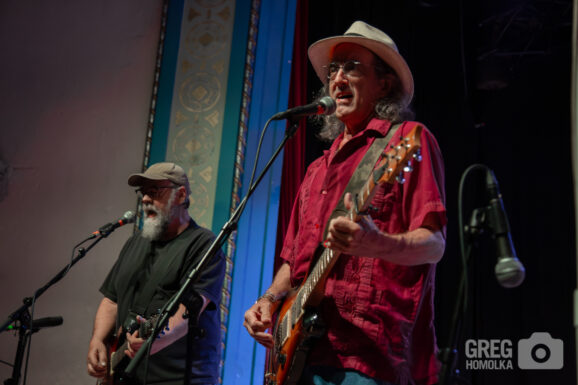You’d be hard-pressed to find anyone born in the past 70 years or so who doesn’t recognize Bob Dylan’s influence as an artist. Plenty of folks find his unmistakable voice to be grating; others may refute his worth as a Nobel Prize-winning poet, but his versatility as a musician and his impact on modern music can’t be overlooked, no matter one’s personal taste. And while his career started six decades ago when he picked up his guitar and his harmonica and ran slap over the smooth crooners of the generation before, he remains active, continuing to tour as his music evolves with the times.
Bob Dylan visited Asheville, NC’s Thomas Wolfe Auditorium on November 2, 2018, playing to a packed house. He took the stage with no fanfare, casually strolling over to his place behind the keys and beginning to play. What followed were two hours of time-traveling back and forth across Dylan’s musical career, with no breaks in between for banter and no pointless filler. The single set played out like a record with only brief pauses between songs, and Dylan moved effortlessly across the spectrum of musical genres, from rockabilly to lite rock to Tom Waits-style jazz, heavy on the upright bass and with a rough gruffness to his voice that only added to his powerful performance.
The Bob Dylan we saw on stage in Asheville bore little resemblance to the man who played a starring role in the political folk music revolution of the early ‘60s. The shaggy hippie with the acoustic guitar strapped to his back has been replaced by a dapper gentleman who spent most of his time behind the keyboard. And like his appearance, his musical style has changed over the years. His performance reflected that, and the old standards — such as “Like a Rolling Stone” and “Blowing in the Wind” — were nearly unrecognizable until the lyrics fell into place. But fall into place they did, and while the current interpretations may have sounded off to some concert-goers who appeared to have only heard Dylan on their grandparents’ record players or via Adele’s cringe-worthy rendition of “Make You Feel My Love” (one insipid and uncouth audience member shouted out “Play Some Bob Dylan!” in the middle of a song), all of the anchors were there.
Even while he was rolling out the lyrics double-time like a jazzy lounge singer, he kept his trademark inquisitive lilt at the end of each line, and his enunciation was better than I’ve ever heard. And when he did pull out the harmonica, it was 1964 again and the crowd responded with the kind of enthusiasm I haven’t seen since Mick Mars noodled around with Motley Crue on the Girls, Girls, Girls tour. And friends, if you’re an old guy with a harmonica and you can get your audience fired up more than a bunch of drunken teenagers in 1989, you deserve better than what you were given by the few audience members who added the only sour notes to the night.
This was a seated show in a beautiful venue. There was no opening act; Bob Dylan took the stage promptly at 8 and played straight through till the end, minus the shortest break before the two-song encore. Despite that, people kept wandering in well after the show began, shuffling through the tight spaces between knees and seat backs, blocking the view of the folks who had enough respect for the artist to be there on time. Worse than that were the people who didn’t seem to understand that the point of this show was to hear Bob Dylan sing. The rude shout out mentioned above wasn’t the only transgression; people all around were having side conversations so loud that they overpowered the music, and the distractions made it difficult to fully experience the stage performance.
On a Friday night in Asheville, there is no shortage of venues where folks can pay a small cover to mill around and have shouted conversations against a backdrop of live music. There is a time and place for that, and it’s unfortunate that Bob Dylan was greeted with such disrespectful behavior by a few people who don’t seem to understand that distinction. For me and the many other folks who were there to see an artist who has been performing longer than many of us have been alive and who helped shape our musical tastes and provided a soundtrack for every stage of our lives, it was an unforgettable experience. The musicianship was exceptional, Dylan was charming as he danced around with the mic stand, and he proved that no matter how much the times may be a-changing’, there will always be a place for real, authentic songwriters in the world.







